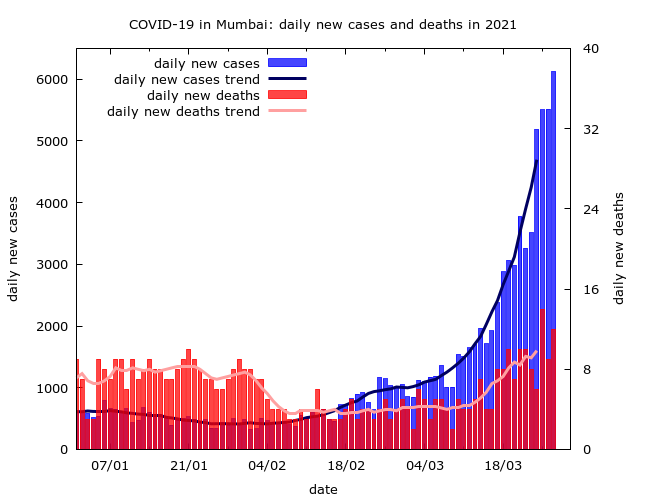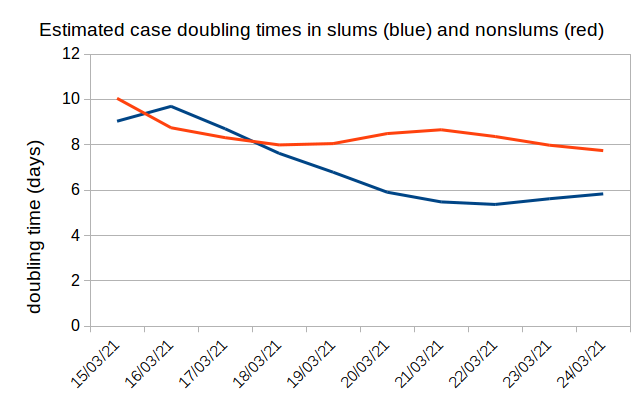
Mumbai #COVID19 update. There has been a sharp rise in testing in Mumbai over the last 4 days. This has stabilised test positivity (weekly averages), but not yet brought it down. About half of the tests are now rapid tests, up from ~30% earlier. (1/6) 



Cases and deaths. Cases are doubling roughly every week at the moment (partly, perhaps, about the rise in testing). In the last two weeks deaths have also been rising - doubling roughly every two weeks (the relatively low numbers mean there's a lot of uncertainty). (2/6) 

In the past week, the slum epidemic seems to be growing faster - estimated case doubling times have been lower in the slums. This is a worrying trend - we've seen before how a nonslum surge sparks a faster slum surge. (These are estimates based on examining ward-wise data.) (3/6) 

Hospitalisations. These are rising - currently at about 70% of capacity. The sharpest increase is in the use of oxygen beds, but ICU and ventilator beds are also filling up. This piece from last year explains how the different kinds of beds are used. (4/6)
hindustantimes.com/mumbai-news/41…
hindustantimes.com/mumbai-news/41…

Vaccinations. To date ~1.1M doses given, about half to over 60s (presumably all the latter are first doses so far). At the 2011 census, the city had ~1.1M over 60s (a little more now). So an estimated ~40-50% of over 60s have had one vaccine dose. (5/6)
timesofindia.indiatimes.com/city/mumbai/ri…
timesofindia.indiatimes.com/city/mumbai/ri…
With rapid spread and rising fatalities, how will we know if vaccination starts to reduce deaths? We should see a dropping % of fatalities in the over-60s. Such an effect is *not* visible yet. But it is something to look out for in the coming weeks. (6/6)
• • •
Missing some Tweet in this thread? You can try to
force a refresh






